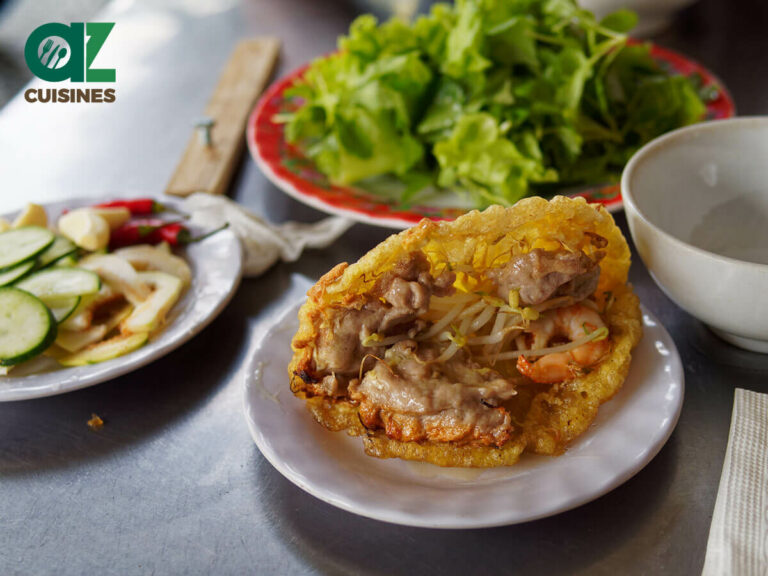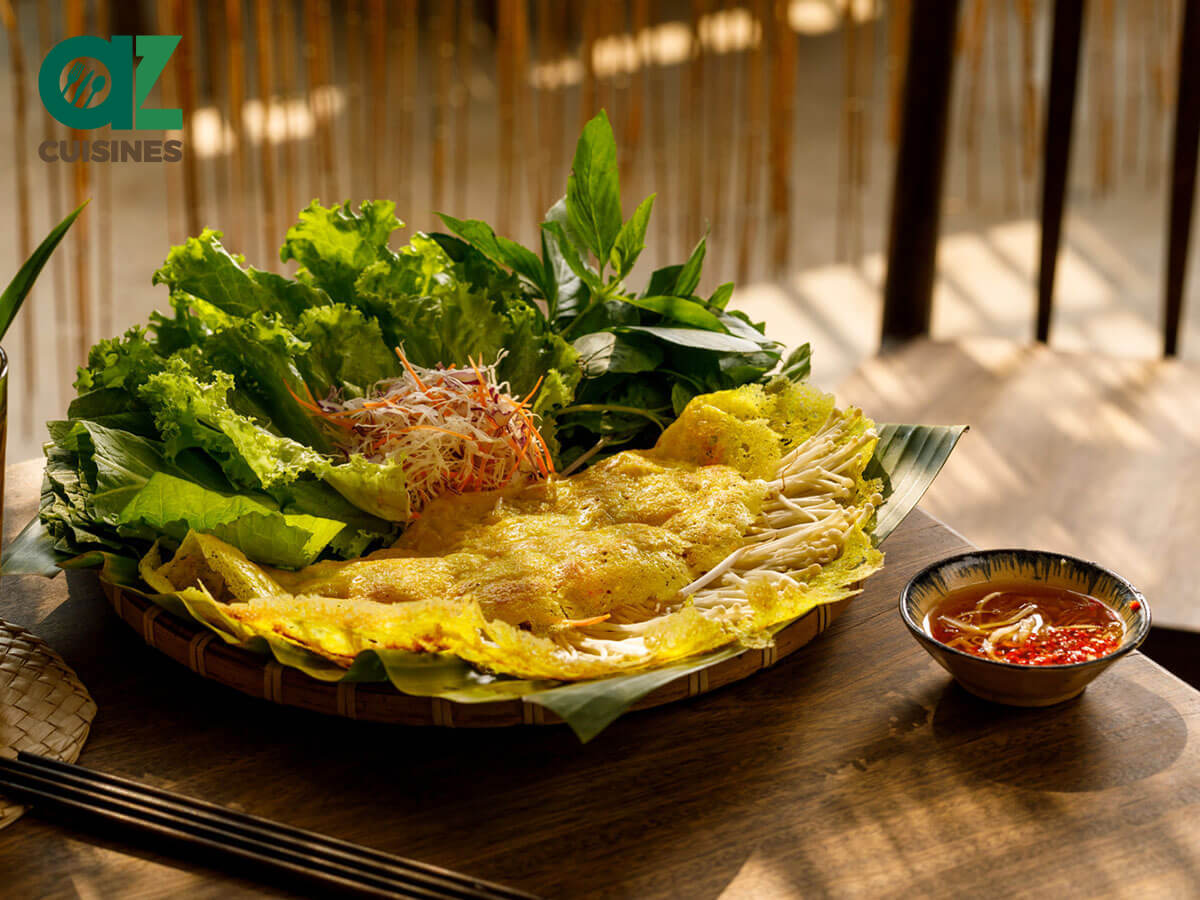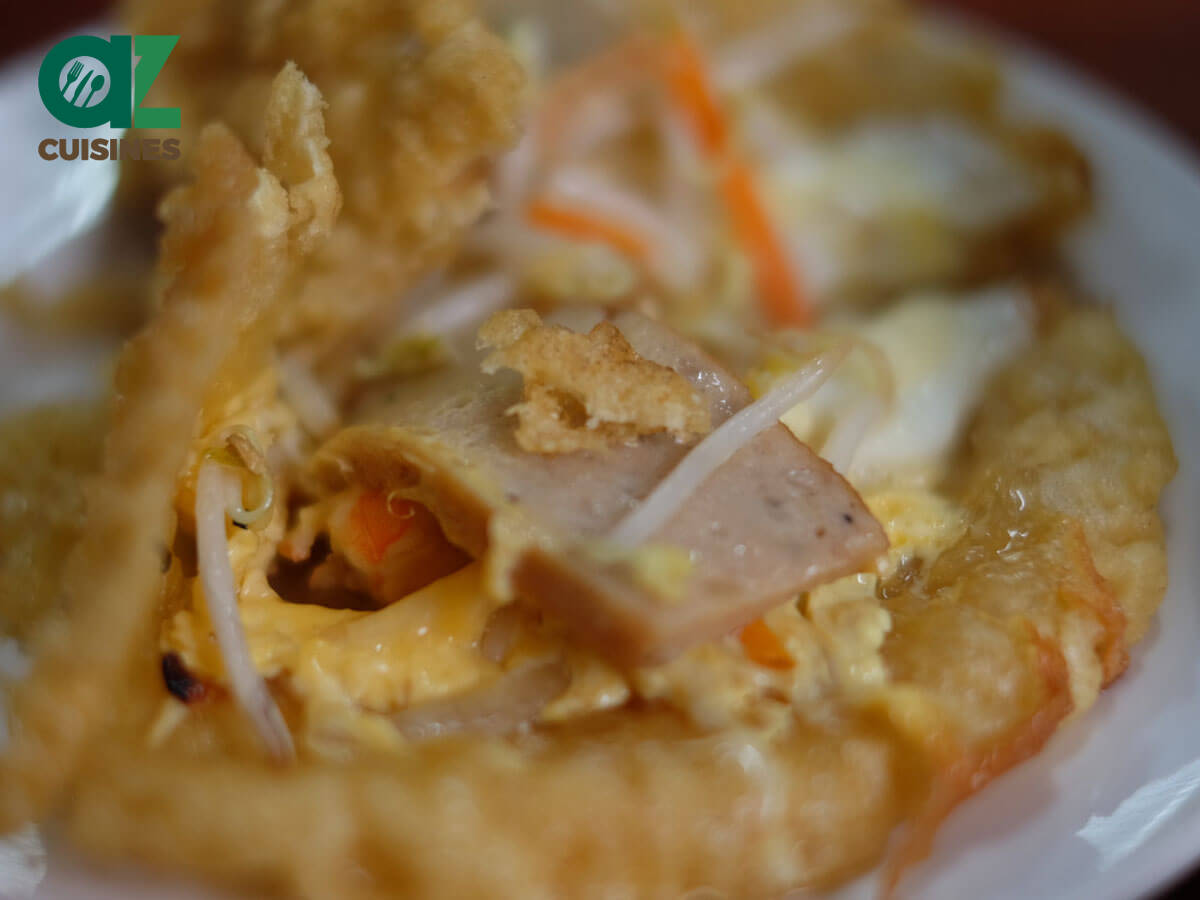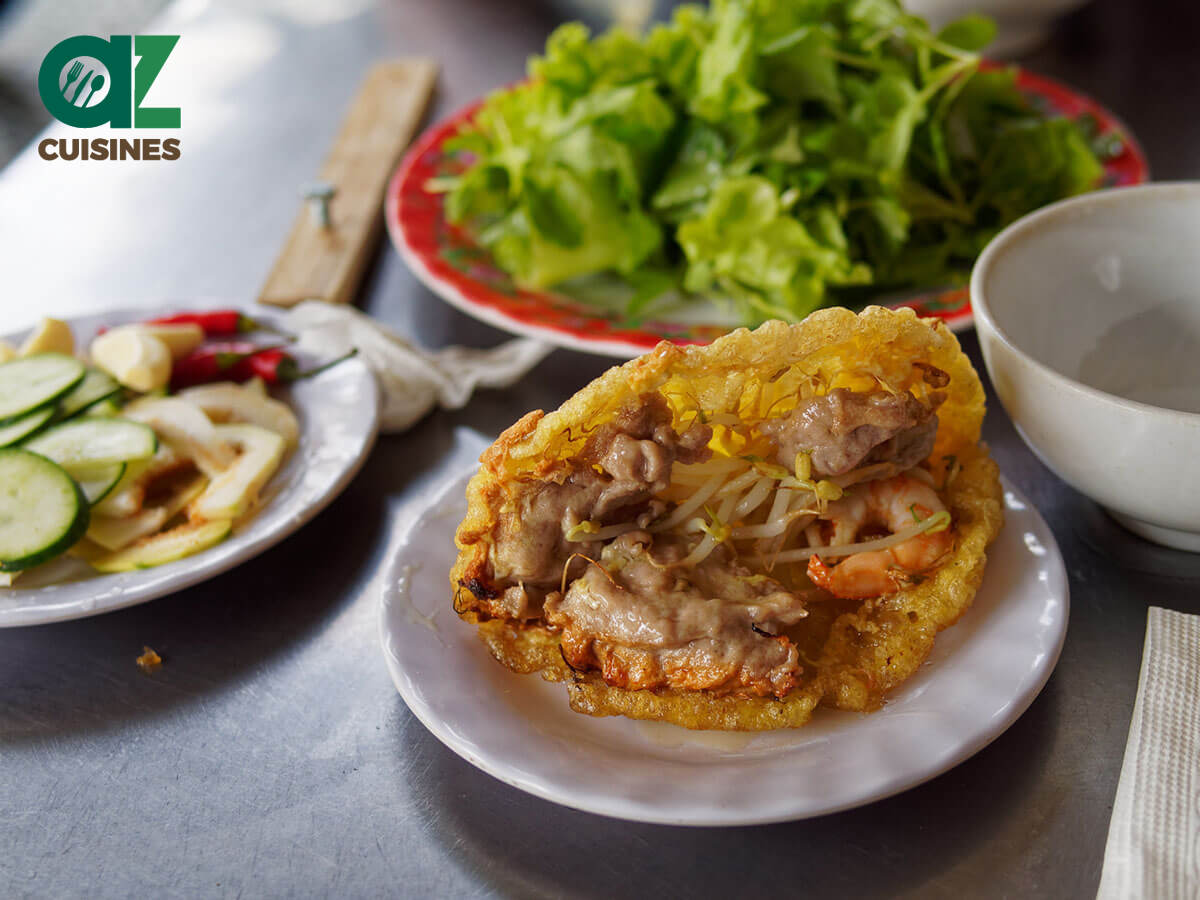Bánh Khoái: Basic Information
Pronunciation
Alternative Name(s)
Dish Type
Course
Mealtime
Popular Variations
- Bánh Khoái (classic version with pork and shrimp toppings)
- Bánh Khoái Cá Kình (with white-spotted spinefoot toppings)
Bánh Khoái: Ingredients and Preparation
Main Ingredients
Main Cooking Method
Preparation Process
Bánh Khoái: A Deep Dive
Cultural Significance
Taste
Texture
Aroma
Color
Serving Style
Serving Temperature
Accompaniment
- Fresh vegetables: cucumbers, lettuce, Thai basil, sliced star fruits, etc.
- Pickled carrots or daikon
- Pâté-based dipping sauce made from pork liver
Occasions
Seasons
Special Diets
Calories
Popularity
Popular Similar Dishes
- Bánh Xèo
- Bánh Căn
- Bánh Khọt
- Appam
- Bindae-Tteok
- Okonomiyaki
- Crêpe
- Taco
- Jianbing
- Roti Canai
- Buchimgae
Popular Dining Area
Bánh khoái is a traditional Vietnamese pancake dish originating in Thua Thien Hue Province in the central region.
It is a variant of the famous bánh xèo (Vietnamese crepes) and features many similar ingredients as well as accompaniments. Still, bánh khoái is smaller, thicker, and has many distinct traits.
The origin of the name “bánh khoái” is unclear. The most popular theory says that it was a corruption of “bánh khói” (“smoke pancake”) since bánh khoái was originally cooked in a traditional wood stove that could smoke up if loaded with wet wood.
Another explanation is that “khoái” came from “khoái khẩu,” which means “appetizing” in Vietnamese.
Bánh khoái is usually folded in half and served with a viscous pâté-based sauce (known locally as “nước lèo”), pickles, and various vegetables, creating a renowned street food.
Read on to discover other wonderful facts about this pancake dish, such as upsides, downsides, and common concerns. I will also cover the bánh khoái’s differences from bánh xèo and recommend similar dishes.
Key Points
Bánh Khoái Images
How Is Bánh Khoái Prepared?
The preparation of bánh khoái requires the following 5 steps.
| Steps | Instructions |
|---|---|
| Making the batter | Mixing rice flour with tapioca starch, water, and turmeric powder (optional) |
| Preparing the toppings | Shaping minced lean pork into meatballs and frying Slicing pork belly and stir-frying with shrimp Stir-frying straw mushrooms Preparing bean sprouts |
| Preparing the pâté-based sauce | Stir-frying minced pork liver with garlic and chili peppers Adding in water and various ingredients, such as sesame seeds, pounded peanuts, shrimp paste, fermented soybeans, etc. Pureeing the mixture until smooth (optional) |
| Cooking the pancake | Heating oil in a skillet Adding the batter and toppings and cooking for a few minutes Spreading a thin layer of scrambled eggs evenly over bánh khoái and continuing cooking until the pancake is golden Repeating this step until the ingredients run out |
| Serving the pancakes | Folding bánh khoái in half and serving with the pâté-based sauce and vegetables |
While making bánh khoái sounds a little complex, this pancake dish has many advantages that make it special.
Pros and Cons of Eating Bánh Khoái
Bánh khoái has the following benefits and drawbacks.
Pros
Cons
After discovering the advantages and disadvantages of bánh khoái, do you want to explore the distinctions between bánh khoái and its cousin, bánh xèo?
Bánh Khoái vs. Bánh Xèo: What Are the Differences?
Bánh khoái stands out from bánh xèo in the following 5 aspects: diameter, thickness, batter, toppings, and sauce.

Bánh Khoái
Diameter: Below 6 inches (15 centimeters)
Thickness: 0.8 – 1.2 inches (2 – 3 centimeters)
Batter: Might feature turmeric powder and often uses egg yolks
Toppings: Less diverse
Sauce: Viscous sauce made from pork liver and many other ingredients

Bánh Xèo
Diameter: 8-12 inches (20-30 centimeters)
Thickness: Very thin
Batter: Must have turmeric powder and not often uses egg yolks
Toppings: More diverse
Sauce: Sweet and sour Vietnamese dipping sauce
Besides these differences, what else can you learn about this pancake dish? Read on to find out!










Truc Tran (Kris)
Senior Food Editor
Expertise
Home Cooking, Meal Planning, Recipe Development, Baking and Pastry, Food Editor, Cooking-video Maker, Vietnamese Food Evaluation Expert
Education
Truc Tran (Kris), an experienced food writer and editor, is great at exploring and describing global cuisines, from simple street food to fancy dining. In her writing, she skillfully mixes different flavors, cooking methods, and culinary traditions, showing the unique character of various cultures through their food and drinks. On azcuisines.com, Kris highlights her knowledge, especially in Asian cuisine and worldwide traditional dishes.